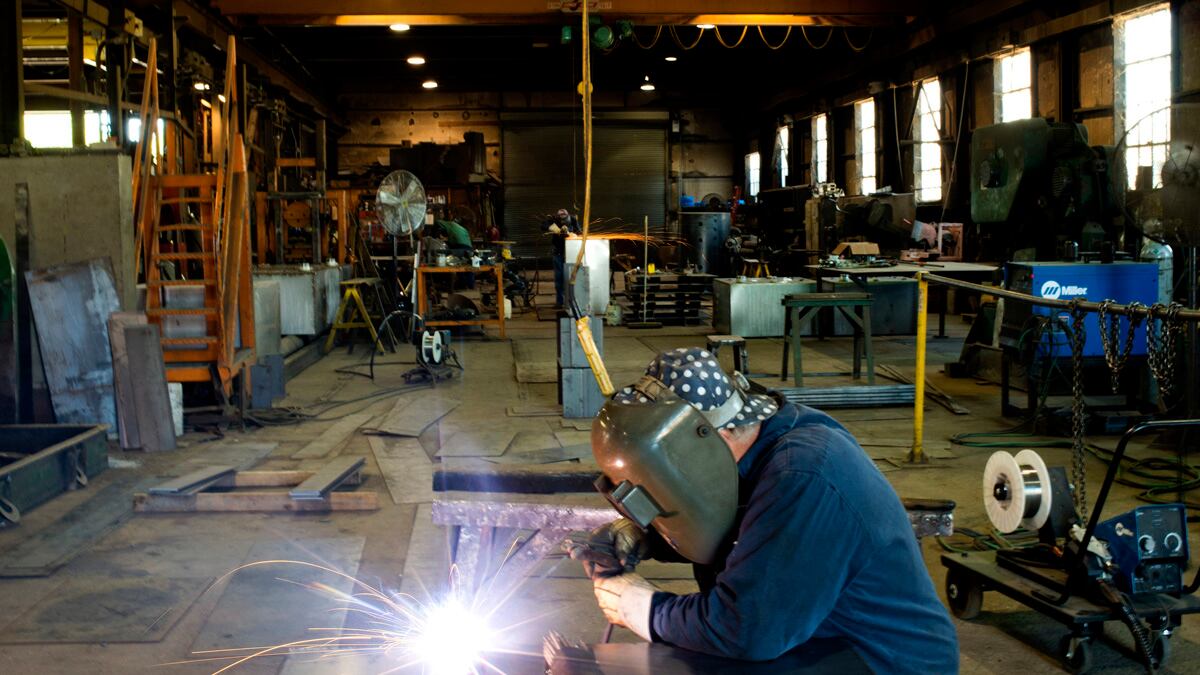The stock market has been booming, and car and home sales are growing nicely. But when we think “economic recovery,” we tend to focus on the big stuff: tractors, factories, machinery, shovels in the ground. On Tuesday, two pieces of economic data gave grim signs that the real economy may be slowing down.

For July, construction spending declined 0.9 percent from June, according to the Census Bureau, while the Institute for Supply Management reported that the manufacturing sector is contracting, for the third straight month.
After a spell of good economic news, the figures come as a surprise. In the past three months, the economy has been chugging along, albeit in low gear. Consumer spending and sentiment are on the upswing, as Americans feel better about buying. Housing is making a slow comeback. And the markets are rallying to impressive highs, bolstered by strong corporate profits. So, as the rest of the economy builds steam, why aren’t construction and manufacturing following along?
First, although it’s tempting to link housing and construction, new residential builds aren’t the sum total of the industry. In fact, in July 2012, spending on the construction of residential properties came in at an annualized rate of $271 billion, compared with $563 billion for nonresidential construction—like hotels, factories, schools, and power plants (which lead that sector). And speaking of factories, manufacturing construction was particularly badly hit, declining 2.2 percent.
The data also gives more evidence that the public sector is proving a big drag on the recovery. Year over year, private construction has risen by 15 percent (though it declined 1.2 percent last month). By contrast, public construction is actually down 0.7 percent from this time last year. The worst hit subsector of all? Conservation and development—like public parks—which are down 3.1 percent from last month, and 16.3 percent from last year. All told, it’s clear that construction is still facing significant headwinds, which can’t be cleared up by more home buys.
As for manufacturing, this is the third straight month that the ISM has reported the sector shrinking. The institute calls manufacturers and asks them about their orders, inputs, productions, inventories, employment, and more—are things better, the same, or worse than last month? They then find the percentage of “same” or “better” answers out of the total. If the number is higher than 50, the sector’s expanding; lower than 50, it’s contracting. This month, the number was 49.6 percent—bad news, and below 50 yet again.
The likely reason? Uncertainty. Large manufacturers are getting fewer incoming orders as businesses brace for bad news at year’s end, whether in the form of fiscal cliff or more European woes. New orders fell 0.9 percent from July, while imports fell by 1.5 percent. But there’s good news. The ISM’s employment index registered at 51.6 percent, indicating hiring is still expanding in manufacturing. Manufacturers aren’t exactly stretched thin—they’re waiting for customers to show up. Just take a look at the ISM customers’ inventories index, which has registered at or below 50 percent for 41 consecutive months.
With manufacturing and construction down, it may be hard to reawaken the images of chugging factories and hard-hatted builders that make an economy look and feel “recovered.” But manufacturing only makes up about 12 percent of our economy, and construction, about 5 percent. We’re not going into a recession. But we’re not out of the woods yet.






